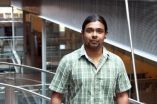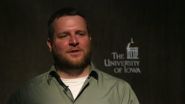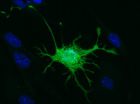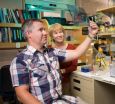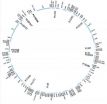New UT Arlington research could improve pharmaceuticals testing
2014-05-01
(Press-News.org) A UT Arlington chemistry professor, renowned for his work in the area of chemical separations, is leading an effort to find a more accurate way to measure water content in pharmaceuticals – a major quality issue for drug manufacturers.
Daniel W. Armstrong, UT Arlington's Robert A. Welch Chair in Chemistry, says the new technique could be 100 times more sensitive than one of the most popular current methods.
"The analysis for water in many consumer products, including drugs, is one of the most required tests done in the world," said Armstrong. "Current methods have many shortcomings, including poor sensitivity and reproducibility; they cannot be used for all products and they can be time consuming. I believe our new 'ionic liquid' method offers improvements in all these areas."
Armstrong and two graduate students recently wrote about their new research in a paper that will be in the June issue of the Journal of Pharmaceutical and Biomedical Analysis. The publication describes using headspace gas chromatography and an ionic liquid gas chromatography column Armstrong's lab developed to measure moisture content in active pharmaceutical ingredients such as ibuprofen, tetracycline and ephedrine. Water content can affect the stability and shelf life of a drug and, when it is too high, cause microbial growth, according to the paper.
Chromatography is the process of separating a chemical mixture to measure its components. Headspace gas chromatography, or HSGC, involves the measuring of volatile analytes, or chemical components, as they diffuse into a "headspace" at the top of a tube of sample, including solids. The new method combines HSGC with the use of ionic liquids. Ionic liquids consist of a mixture of positively and negatively charged molecules. They have a variety of advantages as solvents.
Currently, two methods are most commonly used to measure moisture content. One is called weight loss on drying, or LOD; the other is called Karl Fischer Titration, or KFT. The newly described work from Armstrong's lab is useful on more types of drug ingredients than LOD and is more than 100 times more sensitive in some cases than KFT. It also can be used for much smaller samples and be automated, the paper said.
Graduate student Lillian A. Frink is lead author on the paper and Choyce A. Weatherly, also a graduate student in Armstong's lab, is a co-author.
"We think industry will utilize this method based on its broad applicability, its high accuracy, and the sample size requirements," said Frink. "It also doesn't have side-reactions like current methods, which make them inaccurate."
Armstrong has been a leader in the characterizing and synthesizing ionic liquids. He also holds patents on several open tubular capillary gas chromatography columns that utilize ionic liquids, including those used in the current research.
The newly published paper is called "Water determination in active pharmaceutical ingredients using ionic liquid headspace gas chromatography and two different detection protocols." It is available here: http://www.ncbi.nlm.nih.gov/pubmed/24561336.
INFORMATION:Armstrong joined UT Arlington in 2006 and is the author of more than 550 scientific publications, including 29 book chapters, and holds 23 U.S. and international patents.
His lab recently made headlines when they debuted research on a new method for testing for performance enhancing drugs. That research, which was presented at the 247th National Meeting & Exposition of the American Chemical Society, showed that their protocol could be up to 1,000 more sensitive than many current tests. More information is available here: http://www.uta.edu/news/releases/2014/03/armstrong-sportsresearch.php.
About UT Arlington
The University of Texas at Arlington is a comprehensive research institution and the second largest institution in The University of Texas System. The Chronicle of Higher Education ranked UT Arlington as the seventh fastest-growing public research university in 2013. U.S. News & World Report ranks UT Arlington fifth in the nation for undergraduate diversity. Visit http://www.uta.edu to learn more and follow #UTAdna.
ELSE PRESS RELEASES FROM THIS DATE:
Playing pool with carbon atoms
2014-04-30
A University of Arizona-led team of physicists has discovered how to change the crystal structure of graphene, more commonly known as pencil lead, with an electric field, an important step toward the possible use of graphene in microprocessors that would be smaller and faster than current, silicon-based technology.
Graphene consists of extremely thin sheets of graphite: when writing with a pencil, graphene sheets slough off the pencil's graphite core and stick to the page. If placed under a high-powered electron microscope, graphene reveals its sheet-like structure ...
Ground breaking technique offers DNA 'Sat Nav' direct to your ancestor's home 1,000 years ago
2014-04-30
Tracing where your DNA was formed over 1,000 years ago is now possible due to a revolutionary technique developed by a team of international scientists led by experts from the University of Sheffield.
The ground breaking Geographic Population Structure (GPS) tool, created by Dr Eran Elhaik from the University of Sheffield's Department of Animal and Plant Sciences and Dr Tatiana Tatarinova from the University of Southern California, works similarly to a satellite navigation system as it helps you to find your way home, but not the one you currently live in – but rather ...
Cutting cancer to pieces: New research on bleomycin
2014-04-30
A variety of cancers are treated with the anti-tumor agent bleomycin, though its disease-fighting properties remain poorly understood.
In a new study, lead author Basab Roy—a researcher at Arizona State University's Biodesign Institute—describes bleomycin's ability to cut through double-stranded DNA in cancerous cells, like a pair of scissors. Such DNA cleavage often leads to cell death in particular types of cancer cells.
The paper is co-authored by professor Sidney Hecht, director of Biodesign's Center for BioEnergetics. The study presents, for the first time, alternative ...
Infertile women want more support
2014-04-30
VIDEO:
University of Iowa Communication Studies researchers Keli Steuber and Andrew High talk about infertility.
Click here for more information.
Many women coping with infertility count on relatives or close friends for encouragement and assistance. But according to research at the University of Iowa, when it comes to support, women may not be receiving enough—or even the right kind.
"Infertility is a more prevalent issue than people realize. It affects one in six couples, ...
Stem cells from teeth can make brain-like cells
2014-04-30
University of Adelaide researchers have discovered that stem cells taken from teeth can grow to resemble brain cells, suggesting they could one day be used in the brain as a therapy for stroke.
In the University's Centre for Stem Cell Research, laboratory studies have shown that stem cells from teeth can develop and form complex networks of brain-like cells. Although these cells haven't developed into fully fledged neurons, researchers believe it's just a matter of time and the right conditions for it to happen.
"Stem cells from teeth have great potential to grow into ...
Salk Institute study identifies novel regulator of key gene expression in cancer
2014-04-30
LA JOLLA—Scientists at the Salk Institute for Biological Studies have identified a key genetic switch linked to the development, progression and outcome of cancer, a finding that may lead to new targets for cancer therapies.
The switch, a string of nucleotides dubbed a long non-coding RNA (lncRNA), does not code for proteins like regular RNA. Instead, the scientists found, this particular lncRNA acts as an on/off switch for a key gene whose excessive activity is tied to inflammation and cancer, COX-2.
The COX-2 gene mediates inflammation, which in most cases helps our ...
New revolutionary sensor links pressure to color change
2014-04-30
RIVERSIDE, Calif. — Imagine an automobile crash test that uses test dummies painted all over with a substance that can change color according to the levels of stress that various parts of the dummies' bodies will endure. Such a "color map" could provide vital information to engineers designing safer automobiles.
Or imagine baseball gloves that when worn show the batters if they are using the appropriate amount of pressure to grip their bats, resulting in better performance.
New technology developed at the University of California, Riverside may now make the above and ...
EARTH Magazine: Precise to a fault: How GPS revolutionized seismic research
2014-04-30
Alexandria, Va., - Global Positioning System (GPS) technology was conceived in the 1960s to provide precise time and location data to the U.S. military, but it was soon embraced by geodesists and earth scientists. The first major test of GPS as a seismic tool occurred on Oct. 17, 1989, when the Loma Prieta earthquake struck San Francisco just as the third game of the World Series was about to begin at Candlestick Park. The quake killed 63 people, injured several thousand and caused an estimated $6 billion in damage.
Prior to the quake, geoscientists had placed GPS markers ...
Simple sequence repeats for population-level studies of pines
2014-04-30
Simple sequence repeats, abbreviated SSRs and frequently referred to as microsatellites, are highly variable sections of the genome. 'Sequence repeat' refers to the fact that a nucleotide motif is repeated. 'Simple,' because the repeated sequence often consists of only a couple of nucleotides—for example, ATAT.
Because these markers typically have high rates of molecular evolution, the number of repeats present in the genome often differs between individuals. By isolating SSRs and comparing length differences between taxa, evolutionary relationships can be inferred. Their ...
Regenerative medicine approach improves muscle strength, function in leg injuries
2014-04-30
PITTSBURGH, April 30, 2014 – Damaged leg muscles grew stronger and showed signs of regeneration in three out of five men whose old injuries were surgically implanted with extracellular matrix (ECM) derived from pig bladder, according to a new study conducted by researchers at the University of Pittsburgh School of Medicine and the McGowan Institute for Regenerative Medicine. Early findings from a human trial of the process and from animal studies were published today in Science Translational Medicine.
When a large volume of muscle is lost, typically due to trauma, the ...

